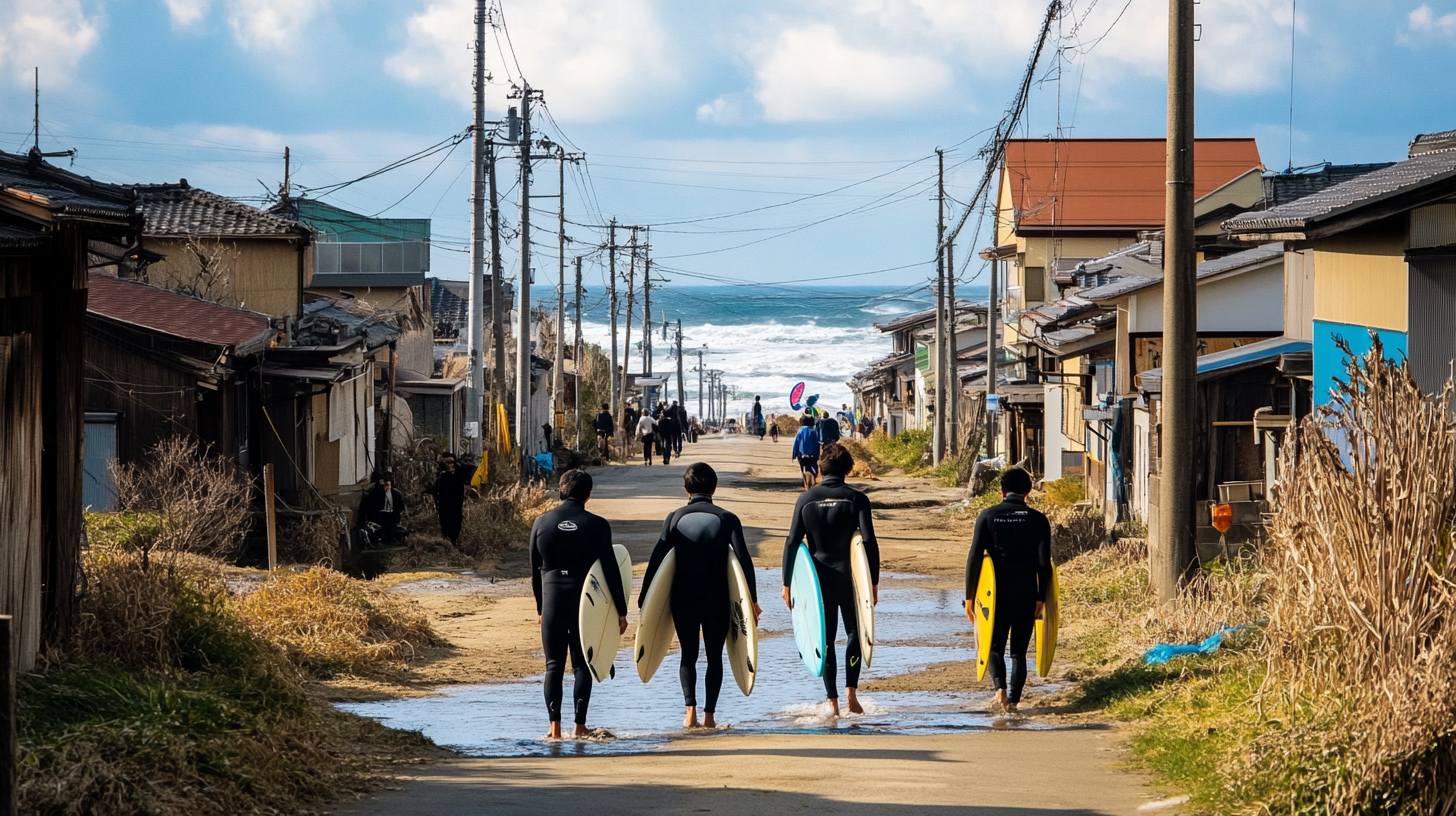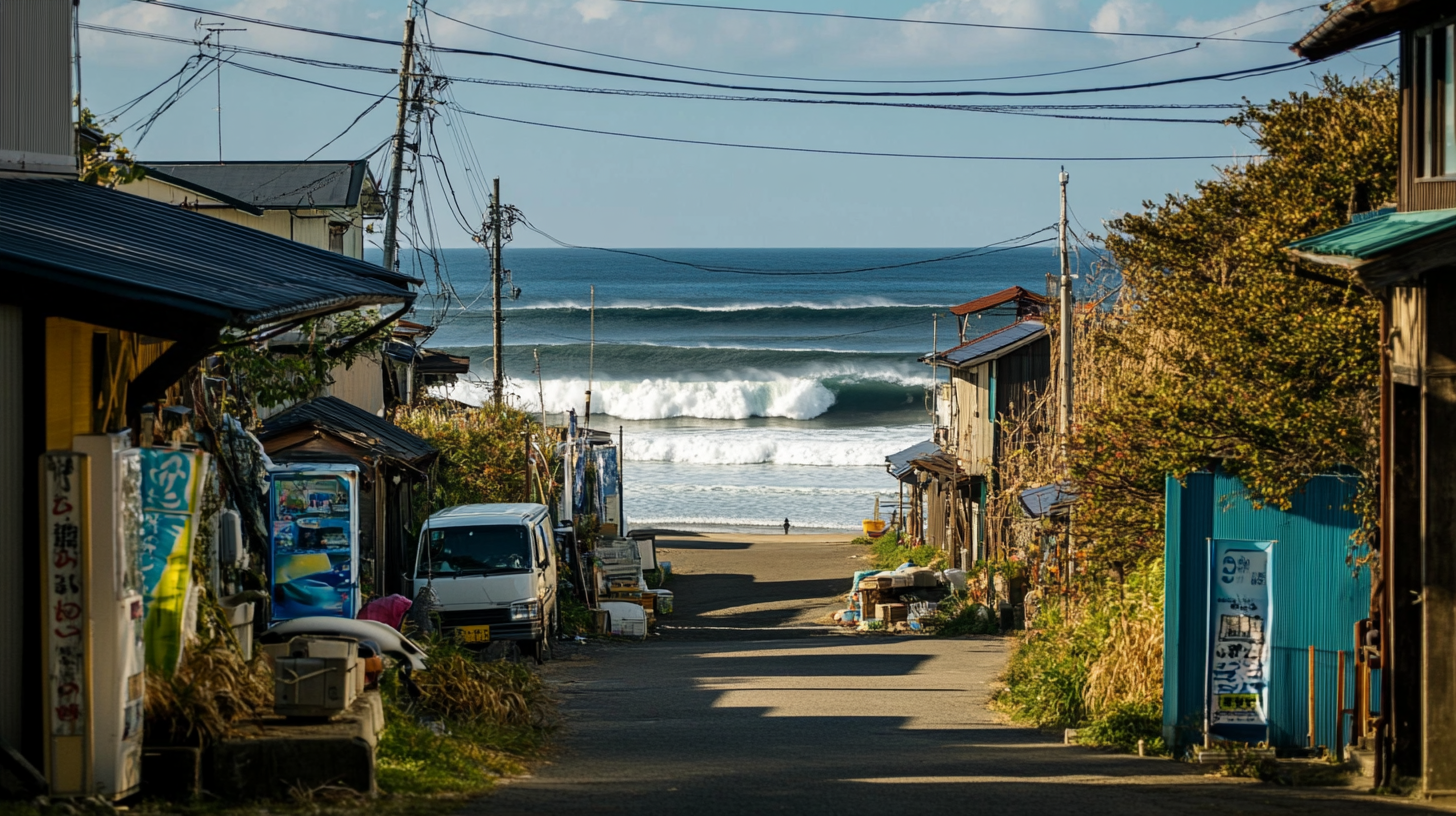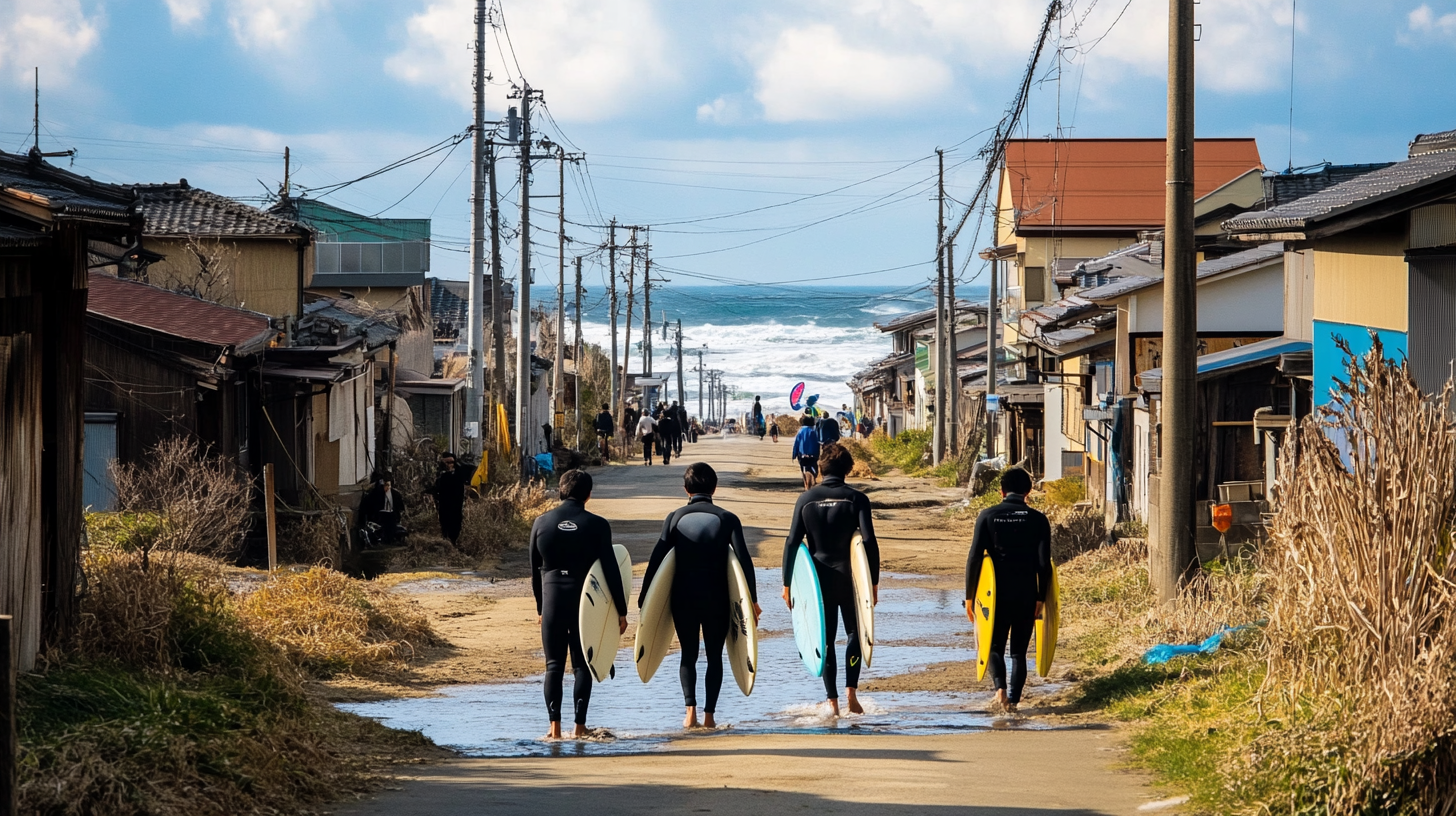

Surfing as a catalyst for regional revitalization
Japan’s coastal regions, once primarily known for their fishing industries and scenic beauty, are now experiencing a resurgence thanks to the growing popularity of surfing. These areas, which were previously facing economic challenges due to depopulation and the decline of traditional industries, are now being revitalized as surfing destinations. The influx of surfers, both domestic and international, has brought a new wave of tourism, injecting much-needed revenue into local economies.
Local governments and businesses have recognized the potential of surfing as a key driver for regional development. By investing in infrastructure such as surf schools, accommodations, and restaurants, these coastal towns are transforming into bustling hubs that cater to the needs of adventure-seeking tourists. The ripple effect of this growth is evident in the creation of new jobs, the rise of local entrepreneurship, and the rejuvenation of once-quiet communities.
Moreover, surfing events and competitions are drawing global attention to these regions, further boosting their profile as premier destinations. These events not only attract professional surfers but also bring in spectators and media coverage, amplifying the economic impact. As a result, areas that were once overlooked are now thriving, with surfing acting as a powerful catalyst for regional revitalization.
Blending tradition with modern adventure
Japan’s coastal regions offer more than just world-class waves; they provide a unique opportunity to experience the harmonious blend of traditional Japanese culture with the thrill of modern outdoor adventure. For surfers, this means not only riding some of the best waves in Asia but also immersing themselves in the rich cultural heritage that these coastal towns have to offer.
After a day on the water, visitors can explore local shrines, participate in tea ceremonies, or enjoy traditional Japanese cuisine at family-run restaurants. Many of these coastal communities have preserved their historical charm, with centuries-old temples and festivals that offer a glimpse into Japan’s past. This fusion of old and new creates a distinctive experience for surfers and tourists alike, where the adrenaline of catching waves is complemented by the serenity of cultural exploration.
In some areas, local artisans and craftsmen have also found new opportunities to showcase their work to a broader audience. From handmade surfboards crafted using traditional woodworking techniques to locally produced ceramics and textiles, these coastal towns are becoming hotspots for those seeking authentic Japanese craftsmanship. This cultural exchange between surfers and local artisans not only enriches the visitor experience but also helps sustain traditional industries that might otherwise fade away.
For many surfers, the appeal of Japan’s surf spots lies in this unique combination of adventure and cultural immersion. Whether it’s soaking in an onsen (hot spring) after a long day in the ocean or learning about the local fishing traditions that have sustained these communities for generations, the experience goes beyond just the sport. It’s about connecting with the land, the people, and the history that make these regions so special.
Sustainable tourism and community-driven growth
As Japan’s coastal regions continue to attract surfers from around the world, there is a growing emphasis on sustainable tourism practices that ensure the long-term health of both the environment and local communities. Many of these areas are rich in natural beauty, with pristine beaches, lush forests, and diverse marine ecosystems. To preserve these assets, local governments, businesses, and residents are working together to promote eco-friendly initiatives that minimize the environmental impact of increased tourism.
One of the key strategies being implemented is the development of low-impact infrastructure. Surf camps, lodges, and restaurants are increasingly adopting sustainable building practices, using locally sourced materials and renewable energy solutions. In addition, many surf schools and tour operators are educating visitors on the importance of respecting the environment, from proper waste disposal to avoiding damage to coral reefs and marine life. These efforts are helping to create a culture of environmental stewardship among both locals and tourists.
Community-driven initiatives are also playing a crucial role in the sustainable growth of these regions. Local residents are actively involved in shaping the future of their towns, ensuring that tourism development aligns with their values and needs. In some areas, cooperatives have been formed to manage resources and share the benefits of tourism more equitably. This collaborative approach not only empowers local communities but also fosters a sense of pride and ownership over the preservation of their natural and cultural heritage.
Furthermore, many coastal towns are embracing the concept of “slow tourism,” encouraging visitors to stay longer and engage more deeply with the local culture and environment. Rather than focusing on high-volume, short-term tourism, these regions are promoting experiences that allow visitors to connect with the land and the people in meaningful ways. Whether it’s participating in beach clean-ups, learning about sustainable fishing practices, or supporting local artisans, tourists are encouraged to contribute positively to the communities they visit.
By prioritizing sustainability and community involvement, Japan’s premier surfing destinations are setting an example for how tourism can be a force for good. These efforts not only protect the environment but also ensure that the economic benefits of tourism are shared by all, creating a more resilient and vibrant future for these coastal regions.
Surfing as a catalyst for regional revitalization
Japan’s coastal regions are riding a wave of change, and it’s not just the surfers catching it. Once sleepy fishing villages are now buzzing with life, thanks to the influx of surf enthusiasts from all over the world. These areas, blessed with some of the best breaks in Asia, are seeing a surge in tourism that’s breathing new life into local economies.
Take Chiba and Shikoku, for example. Once known primarily for their fishing and agriculture, these regions are now hotspots for surfers chasing the perfect wave. And with the surfers come the businesses—cafes, surf shops, and even boutique hotels are popping up faster than you can wax a board. It’s a win-win: surfers get their fix, and the locals get a much-needed economic boost.
But it’s not just about the money. Surfing is also helping to foster a sense of community. Locals and visitors alike are bonding over their shared love of the ocean, and many of the new businesses are run by locals who’ve embraced the surf culture. It’s a bit like Byron Bay, but with more sushi and fewer kombucha bars.
And let’s not forget the environmental angle. Many of these regions are pushing for sustainable tourism, ensuring that the natural beauty that draws surfers in the first place isn’t destroyed by the very people who come to enjoy it. It’s all about finding that balance—keeping the waves clean and the stoke high.
Balancing tourism growth with cultural preservation
As Japan’s surf scene grows, so does the challenge of balancing tourism with the preservation of local culture and traditions. It’s a delicate dance—on one hand, you’ve got the influx of international surfers bringing in much-needed revenue, but on the other, there’s the risk of losing the very essence of what makes these coastal towns special.
Many of these regions have centuries-old traditions tied to the sea, from fishing practices to local festivals. The last thing anyone wants is for these to be washed away in a tide of surfboards and beach bars. That’s why local communities are taking a proactive approach, ensuring that tourism growth doesn’t come at the expense of their cultural heritage.
In places like Miyazaki and Kochi, you’ll find surf schools that not only teach you how to ride the waves but also give you a crash course in local customs. It’s not just about catching the perfect barrel—it’s about understanding the deep connection these communities have with the ocean. And let’s be honest, it’s a lot easier to respect a place when you know its story.
There’s also a strong push for eco-friendly tourism. Many surf spots are located in areas of natural beauty, and locals are keen to keep it that way. From beach clean-ups to sustainable surf gear, there’s a real effort to ensure that the impact of tourism is as minimal as possible. After all, no one wants to surf in a sea of plastic.
It’s a bit like walking a tightrope—keeping the stoke alive while making sure the local culture and environment don’t get wiped out. But if there’s one thing surfers know how to do, it’s finding balance. And in Japan, they’re doing just that.

